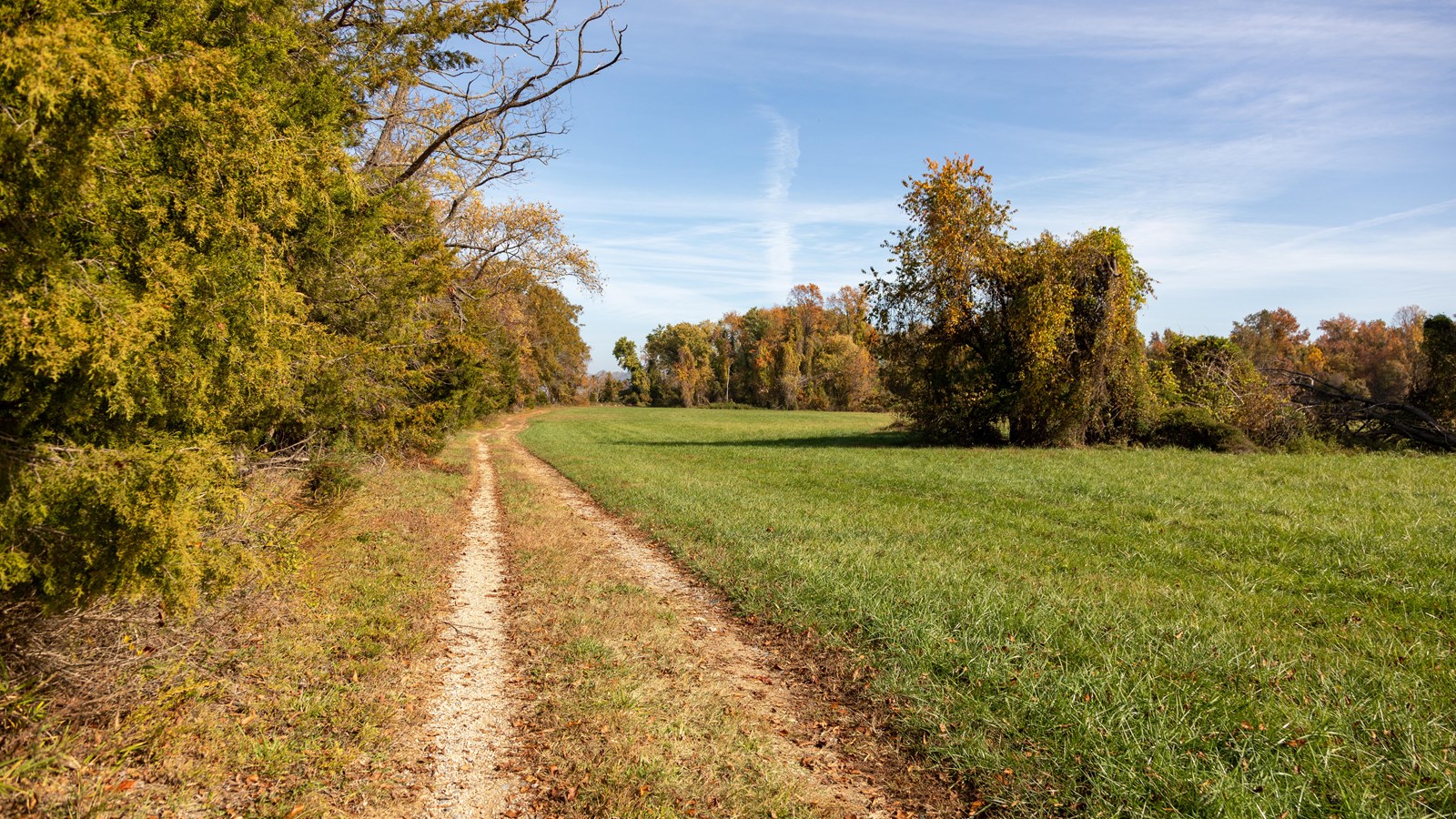Last updated: February 28, 2025
Place
Accokeek Creek

NPS/Claire Hassler
Historical/Interpretive Information/Exhibits, Information Kiosk/Bulletin Board, Trailhead
The Accokeek Creek archeological site (18PR8) is located in Southern Maryland along the banks of the Potomac River. This archeological site is among the most significant sites in the nation because of the impact its excavation had on our modern understanding of Native American societies in the Eastern Middle Atlantic.
The site is located within the boundaries of Piscataway Park, which is administered by National Capital Parks-East of the National Park Service. Situated approximately 25 miles downriver from Washington D.C., along Piscataway Creek, the Accokeek Creek site was home to the Potomac Valley’s indigenous inhabitants for thousands of years–dating as far back as 6,000 years ago and through the 1500s. Among the occupants were the Piscataway Indians of Southern Maryland whose ancestors still live nearby today.
The Accokeek Creek site was excavated in the 1930’s by Alice and Henry Ferguson who purchased land for their home in present-day Piscataway Park in the 1920’s. After excavating tens of thousands of artifacts, the Ferguson’s came to believe that they had rediscovered the site of “Moyaone,” the principal town of the Piscataway chiefdom visited by Captain John Smith in 1608. While the accuracy of the Fergusons’ claim is still disputed today, the excavations yielded a large collection of diagnostic artifacts that have helped form archeologist’s understanding of Native American history and culture in the region.
Based on analysis of stone projectile points found at the site, archeologists have determined that humans have intermittently called Accokeek Creek home for nearly 6,000 years. The site also contains four ossuaries that appear to have been in use between the 1300’s and European contact in the 1600s. The individuals buried in the ossuaries were interred with elaborate grave goods including copper adornments, shell beads, and clay pipes. These finds indicate that the area was occupied by politically complex chiefdoms by the 1500’s and was the home of the Piscataway chiefdom. The Accokeek Creek excavations indicate that potentially dozens of buildings stood at the site. These structures were enclosed by a series of protective palisades at the edge of the town, indicating that Accokeek Creek’s inhabitants were, at times, living in a violent world.
Archeologists believe that the predecessors of the Piscataway and other related peoples came to the Chesapeake Bay from the Appalachian Mountains sometime in the 1300’s bringing with them their Algonquian language and material culture. Based on ethnohistoric documents some archeologists and historians believe that the Piscataway group migrated instead from the area that became Maryland’s Eastern Shore in the 1300’s. Whatever the case, archeologists agree that the arrival of the Piscataway and other related people resulted in the creation of complex cultural traditions in the Potomac Valley.
In 1608, Captain John Smith visited Piscataway Creek on his voyage up the Potomac River and its tributaries. Smith’s 1612 map of the Chesapeake includes the town of “Moyaons” placed in the approximate location of Accokeek Creek. Map symbols indicate that the settlement was home to a werowance, a powerful Native American chieftain who controlled other groups within a geographical area. In 1634, a group of English colonists sailed up the Potomac and met with the leaders of the Piscataway nation at Moyaone. Their leader, Wannas, informed the colonists that the lands of Piscataway Creek were theirs and English settlement could not occur in the vicinity. It is unknown if the archeological site of Accokeek Creek represents this 17th century village or an earlier settlement that the Piscataway nation relocated from. What is known however, is that the territory was a fundamentally important landscape for the Piscataway people from the time of European contact to the present day.
By the 1690’s, Piscataway land in Prince George’s and Charles Counties had been confiscated by the English colonists and occupied by Maryland planters. Eventually, the Piscataway nation decided to move beyond the borders of the Maryland Colony and dispersed north and west. While many Piscataway migrated outside of Maryland, others decided to stay, forming the ancestors of the current Piscataway inhabitants of the state. The diagnostic artifacts and archeological features present at the Accokeek Creek site have been used to develop and refine a cultural-history of the Mid-Atlantic region. Since its rediscovery in the 1930’s, Accokeek Creek has been one of the most important sites in the nation for understanding the Native American societies of the East Coast.
Sources:
Colonial Encounters
2014. Accokeek Creek (18PR8), http://colonialencounters.org/SiteSummaries/AccokeekCreekSummary.aspx
Colonial Encounters
2014. Susquehannock Fort (18PR8),
http://colonialencounters.org/SiteSummaries/SusquehannockFortSummary.aspx
Curry, Dennis C.
1999. Feast of the Dead: Aboriginal Ossuaries in Maryland, Archaeological Society of Maryland and Maryland Historical Trust Press, Crownsville, MD.
King et al.,
2019. Ethnographic Overview and Assessment: Piscataway National Park, National Capital Region Cultural Anthropology Program, National Park Service, Washington, D.C.
Stephenson, Robert L. et al.
1963. The Accokeek Creek Site: A Middle Atlantic Seaboard Culture Sequence, The University of Michigan Press, Ann Arbor, MI.
Steury, Brent W. and Charles A. Davis
2003. The Vascular Flora of Piscataway and Fort Washington National Parks, Prince Georges and Charles County, Maryland, Castanea, Vol. 68, No. 4 (Dec., 2003), pp. 271-299
University of Michigan
Accokeek Creek, Museum of Anthropological Archaeology
https://lsa.umich.edu/ummaa/collections/archaeology-collections/north-american-archaeology/accokeek-creek.html
National Historic Landmark Nomination of Accokeek Creek.
National Historic Landmarks (NHLs) are historic places that possess exceptional value in commemorating or illustrating the history of the United States. The National Park Service’s National Historic Landmarks Program oversees the designation of such sites. There are just over 2,500 National Historic Landmarks. All NHLs are also listed in the National Register of Historic Places.
